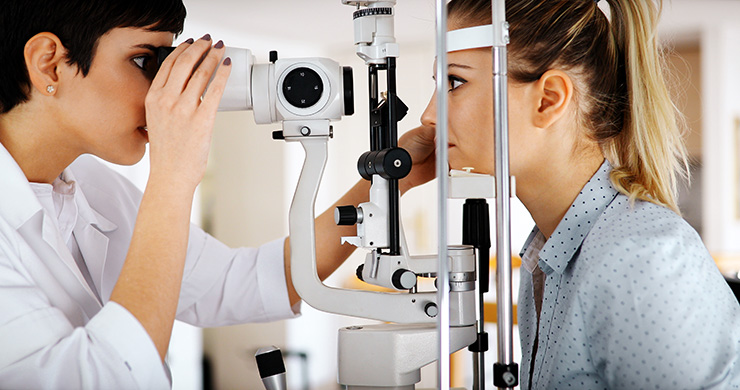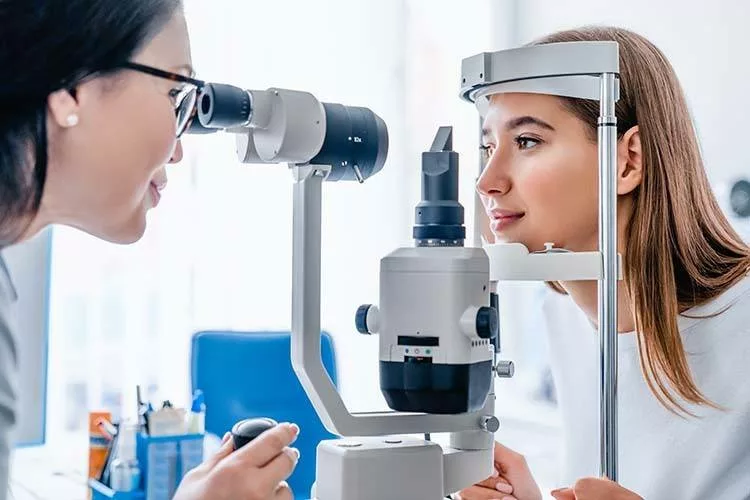Exactly How an Eye Doctor Can Transform Your Vision Health in Chino
Exactly How an Eye Doctor Can Transform Your Vision Health in Chino
Blog Article
Exploring the most recent Technical Advancements in Optometry and What They Mean for Eye Doctors
From the accuracy of Optical Coherence Tomography to the nuanced insights offered by AI-driven analysis devices, these advancements are establishing new requirements in individual assessment and treatment. As these improvements penetrate the technique, optometrists are faced with the difficulty of accepting these tools to improve individual end results.
Innovations in Diagnostic Tools
Progressing the area of optometry, developments in analysis tools have actually changed the means eye care professionals assess and detect visual impairments and eye conditions. The past years has witnessed substantial technological advancements, making it possible for even more exact and detailed examinations.
One more trick advancement is the intro of advanced corneal topography systems, which map the surface area curvature of the cornea with accuracy. These tools are especially valuable for fitting get in touch with lenses and detecting corneal disorders. Electronic retinal imaging has transformed conventional ophthalmoscopy, using comprehensive, panoramic views of the retina that facilitate detailed visual examinations.
The advancement of wavefront aberrometry has actually likewise been vital, making it possible for the evaluation of refractive mistakes with unrivaled precision (Optometrist Chino). This technology assists in customizing corrective lenses and enhancing surgical end results for refractive surgeries. Jointly, these analysis innovations encourage eye doctors to provide exceptional client treatment, ensuring early treatment and customized treatment techniques, ultimately improving aesthetic health and wellness end results
AI in Person Monitoring
Structure on the foundation of cutting-edge analysis tools, the incorporation of expert system (AI) in individual management stands for a transformative jump for optometry. AI systems are increasingly employed to improve effectiveness, accuracy, and customization in individual care. By analyzing substantial amounts of information, AI can determine patterns and predict possible eye problems, allowing optometrists to customize treatments better. This capability is important in handling chronic eye conditions such as glaucoma and diabetic retinopathy, where very early detection and continual tracking are vital.
Moreover, AI-driven platforms promote streamlined client communications and administrative processes. Automated scheduling, digital consultations, and customized follow-up strategies not just improve client contentment but likewise maximize time monitoring for practitioners. These systems can triage individuals based upon the urgency of their conditions, making sure that those in essential need get timely interest.
In addition, AI enhances decision-making by offering optometrists with evidence-based referrals and treatment pathways. By incorporating data from digital health documents, AI tools provide insights that notify scientific choices, reducing the threat of mistakes and boosting client outcomes. As AI remains to develop, its function in client administration will likely broaden, reshaping the landscape of optometric care.
Advancements in Retinal Imaging
In the realm of optometry, retinal imaging has seen amazing technological improvements that are improving diagnostic capabilities and patient care. Innovations such as Optical Comprehensibility Tomography (OCT) and fundus digital photography have actually changed just how eye doctors evaluate the retina and imagine. OCT, in particular, offers high-resolution, cross-sectional pictures of the retina, enabling the thorough assessment of its layers. This ability is indispensable for early detection and monitoring of problems like glaucoma, diabetic retinopathy, and age-related macular deterioration.
Improved imaging methods like OCT angiography are additional refining diagnostic accuracy. This non-invasive technique maps blood circulation in the retina, providing crucial understandings into vascular wellness without the requirement for dye shots. Additionally, flexible optics innovation is being incorporated into retinal imaging systems to remedy ocular aberrations, providing extraordinary image quality. Such developments promote the identification of min retinal changes that might signify illness development.
Furthermore, improvements in expert system are augmenting retinal imaging by allowing computerized evaluation of large datasets. These systems visit this web-site help eye doctors in identifying patterns a measure of pathology, thereby enhancing analysis accuracy and effectiveness. Collectively, these technologies are changing retinal imaging into a cornerstone of contemporary eye care, enhancing results and broadening restorative opportunities.
Teleoptometry's Expanding Duty
Teleoptometry is increasingly becoming an important element of eye care, driven by developments in digital communication and analysis tools. As optometry accepts electronic improvement, teleoptometry promotes remote appointments, permitting eye doctors to expand their solutions past typical borders. This is specifically advantageous in underserved and rural areas where accessibility to specialized eye care is frequently limited. By leveraging high-resolution video clip conferencing and progressed retinal imaging, optometrists can conduct thorough eye tests from afar, making sure timely diagnosis and therapy.
The integration of artificial intelligence (AI) more enhances teleoptometry, allowing the evaluation of visual data and aiding in the detection of ocular conditions such as glaucoma and diabetic person retinopathy. AI-powered algorithms can swiftly translate complex imaging information, supplying eye doctors with important understandings that reinforce clinical decision-making.
In addition, teleoptometry supports connection of treatment through smooth assimilation with electronic wellness records (EHRs), enabling eye doctors to maintain extensive patient histories. When consulting with various professionals., this guarantees that people obtain constant and tailored treatment even.
Regardless of these benefits, challenges stay, consisting of making sure data safety and taking care of person expectations. Teleoptometry represents a considerable stride towards click for more info more available, effective, and patient-centered eye treatment. As modern technology advances, its duty is poised to expand further.

Future Patterns in Eye Care
A myriad of innovative trends is set to improve the future of eye treatment, driven by technical innovations and the advancing demands of individuals. One considerable trend is the integration of fabricated knowledge (AI) in diagnostics, which guarantees to enhance the accuracy and effectiveness of eye assessments. AI algorithms can analyze substantial quantities of data from retinal photos, possibly finding conditions like diabetic person retinopathy and glaucoma earlier than typical approaches.
In addition, personalized medicine is obtaining grip in optometry, with hereditary testing notifying personalized treatment strategies. This technique aims to maximize client end results by tailoring treatments to private hereditary profiles. Wearable technology, such as smart contact lenses, is likewise on the horizon, supplying real-time tracking of intraocular stress or glucose degrees, thus providing continual insights right into systemic and ocular wellness.
The fostering of increased reality (AR) and digital reality (VR) in training and patient education is an additional emerging pattern. These technologies use immersive experiences that can boost understanding and skills both for clients and eye doctors. As these trends develop, eye doctors must stay abreast of technical developments to supply cutting-edge care, making sure better client results and satisfaction in the dynamic landscape of eye treatment.
Verdict

Jointly, these diagnostic innovations encourage eye doctors to more helpful hints supply exceptional client care, guaranteeing early intervention and customized treatment techniques, eventually improving aesthetic wellness end results.

As these technologies proceed to progress, eye doctors should adapt and include them into technique, ultimately maximizing operations effectiveness and raising the standard of eye care provided to individuals.
Report this page